Lapis has been limping. It’s not a hard limp, but a definite limp. It must hurt her because she stops her walking and lies down apparently to relieve the pain.
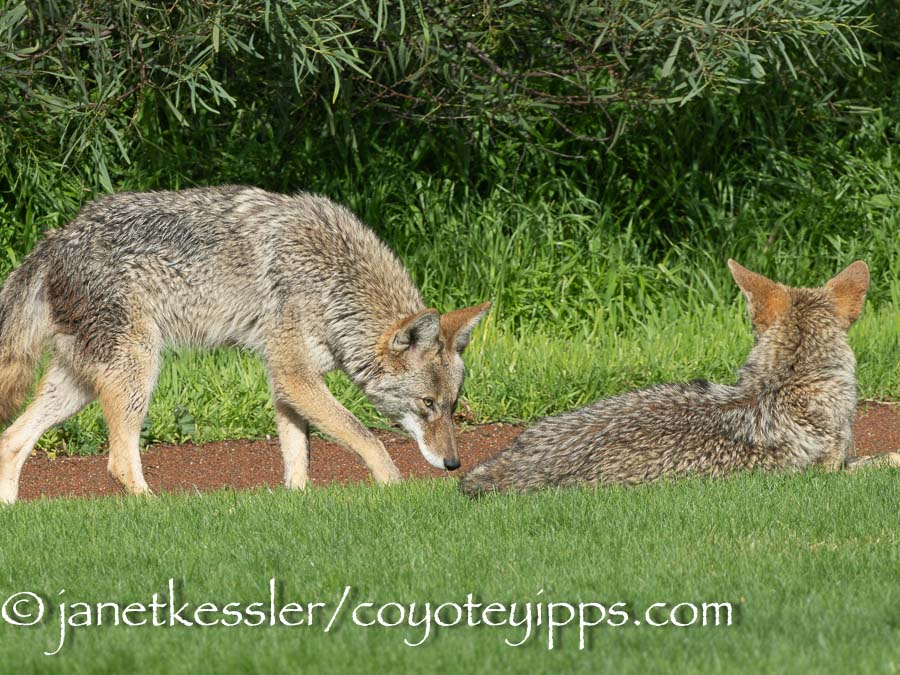
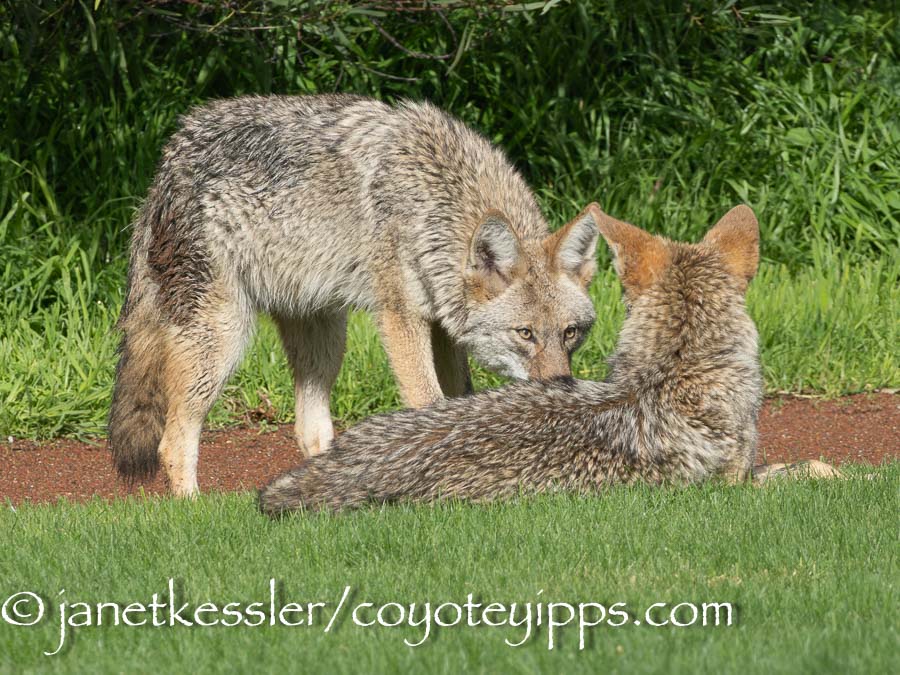
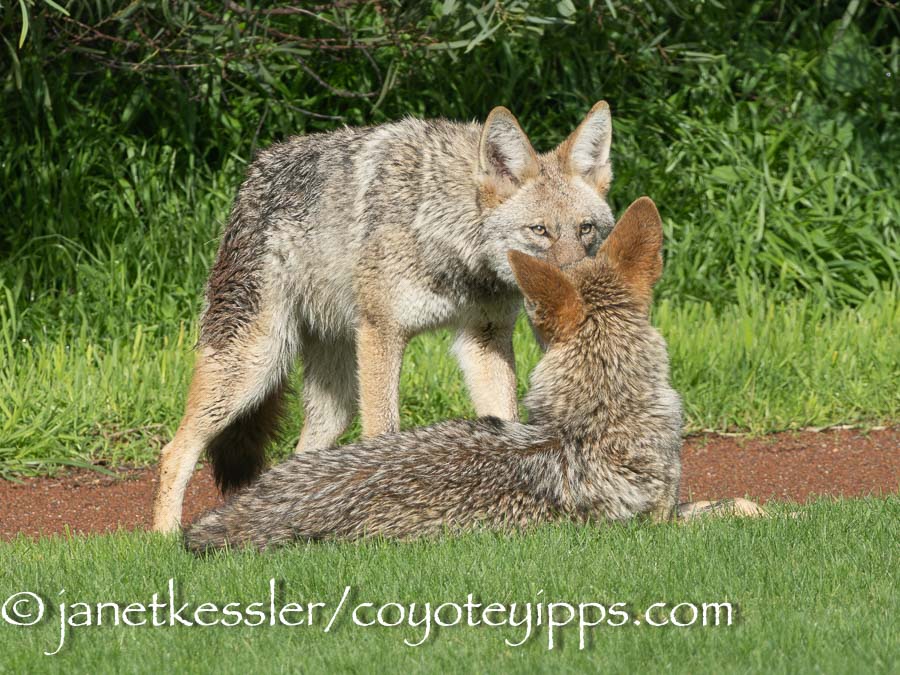
Brother then comes by and can sense why she’s lying exactly this way. He comes by, keenly focusing on her eyes — eye-to-eye communication, caringly reading every nuance of her reaction to himself as he gets closer. He’s looking to see if she might not want him to come closer. I know she trusts him because he has earned that trust.
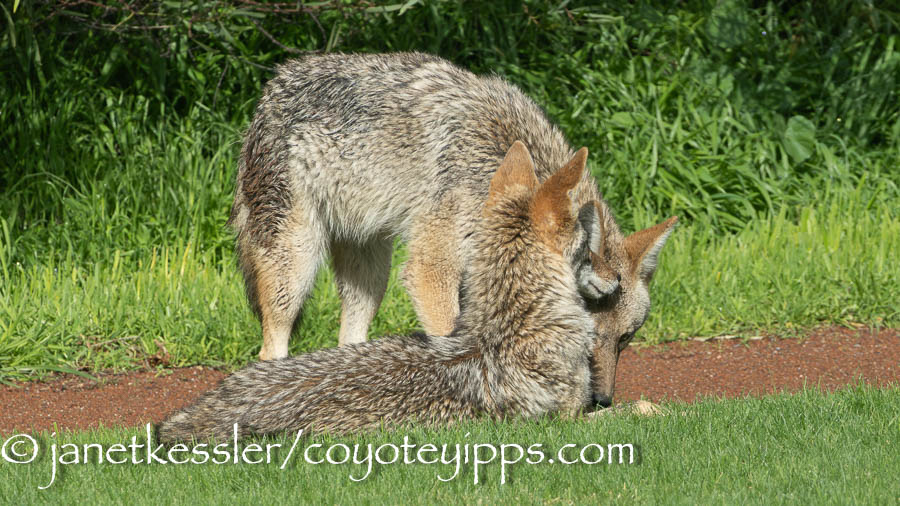
He is always attuned and responsive to her, whether when she’s ready for a chase or just wants to sit. He knows she has a painful leg. Fascinatingly, and I’ve seen this before a number of times, he SNIFFS her foreleg, not just to find out more about it, but also to let her know that he knows about it and that he is concerned. She trustingly watches his very careful and deliberate approach. I myself don’t know if pheromone markers of any type are produced by such an injury, or if simply the heat from the injury is what he detects, but he is able to detect what he needs to. I’ve seen this same type of awareness and detection several times: 1) In this photo, a female found out more about her mate’s injury by smelling it, and then prodded him to move out of the area where dogs might continue to chase him (see photo below from SPCAHSU Peninsula talk]; and here a sibling sniffed to find out about her brother’s injury and then tried channeling his movement to safer places: Cat prodding Sparks.
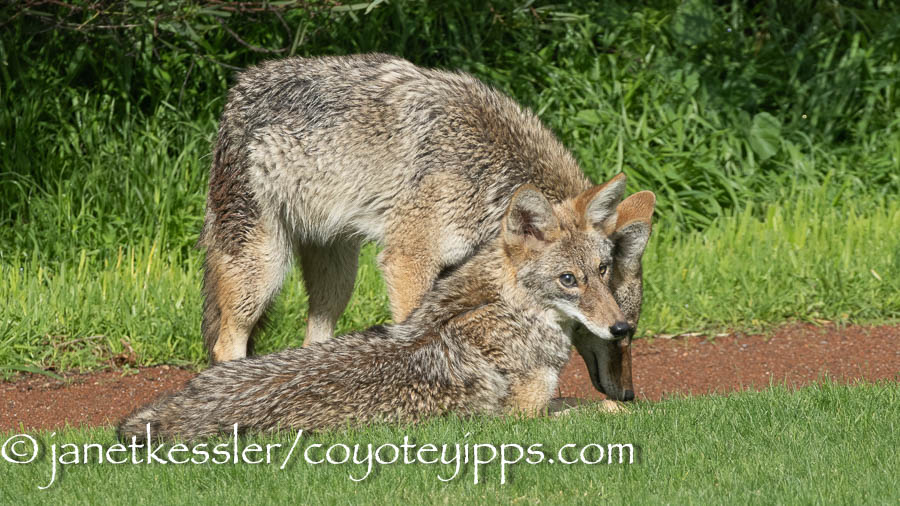
When Brother appears, he doesn’t poke or push, he simply sniffs and then slowly lowers himself to the ground next to her to lie by her side, as though he wanted to be a comforting presence. I was enthralled watching this: mostly the subtle eye to eye contact, keen mutual awareness, and caring responsiveness.
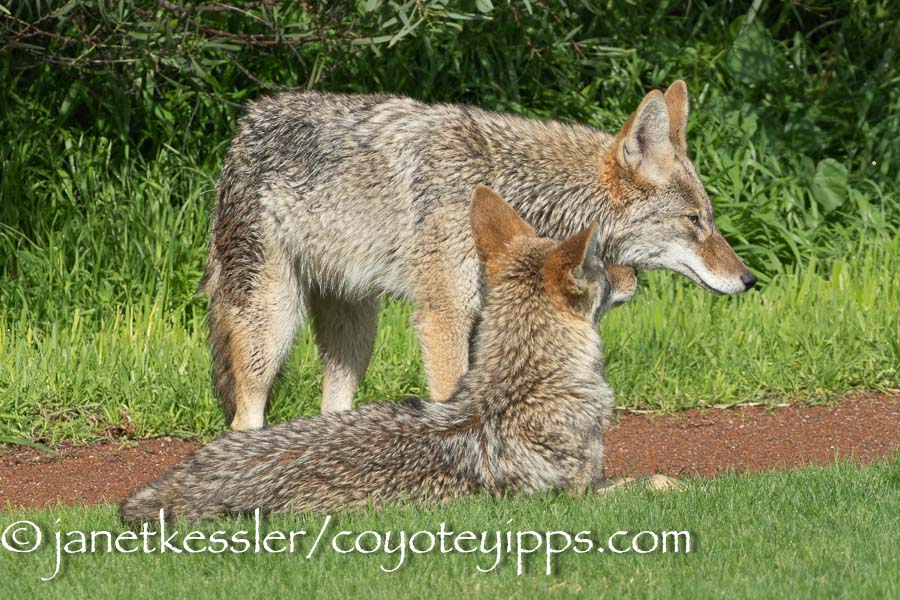
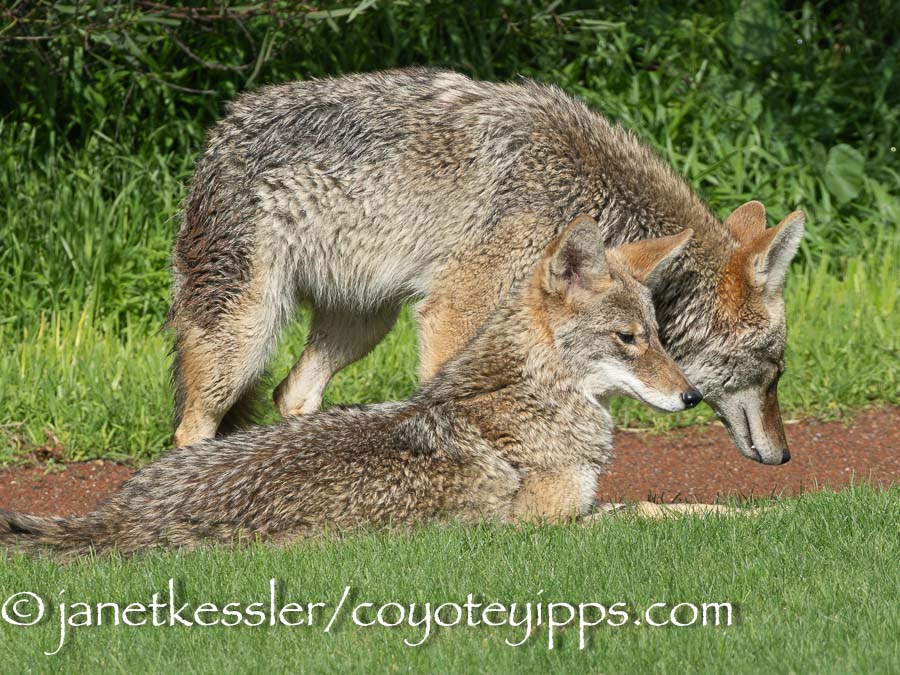
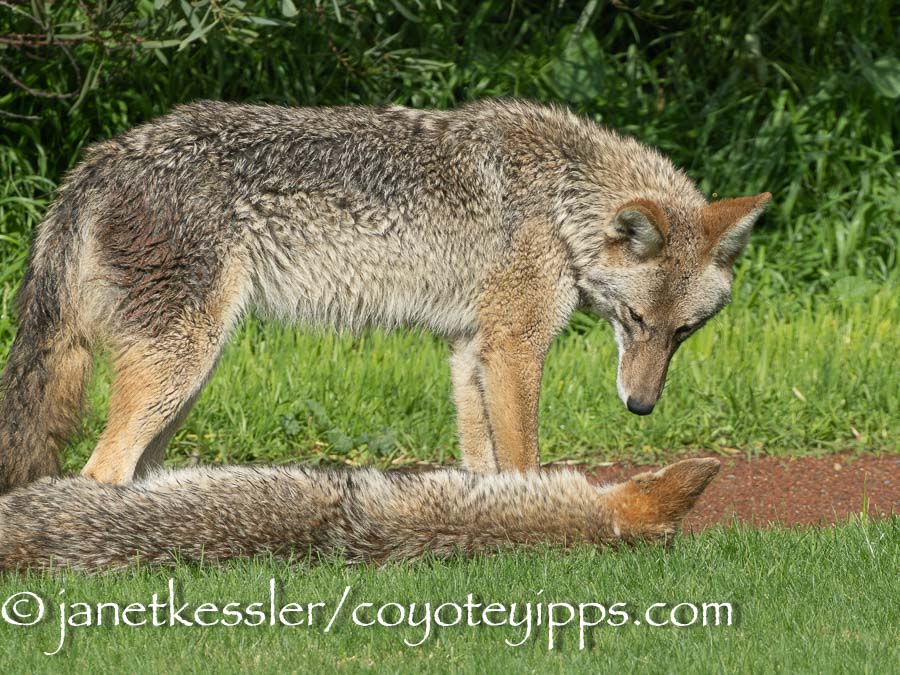
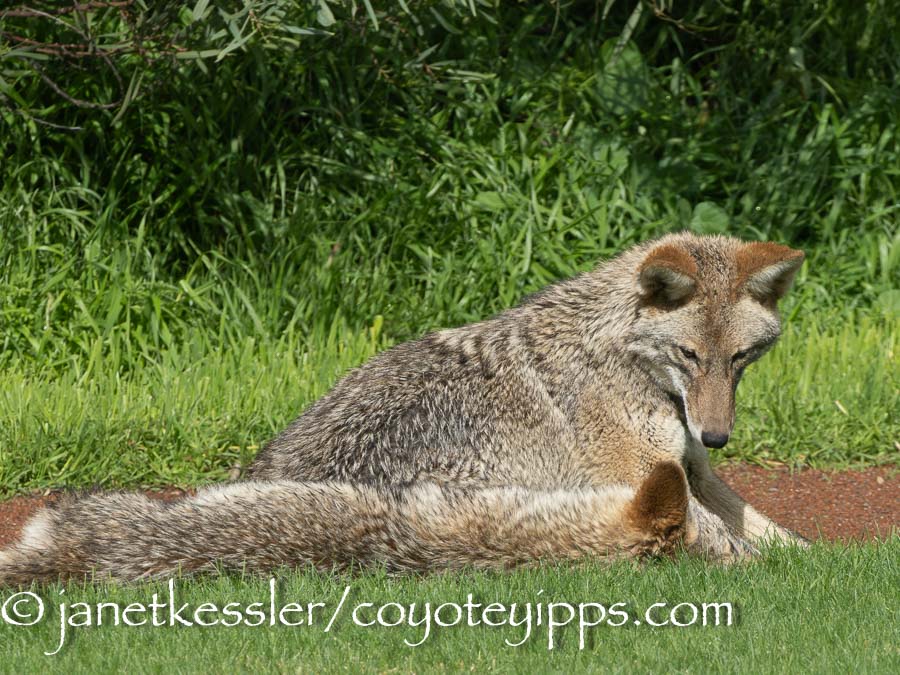
These two are highly intune, almost telepathically communicative with each other. Mostly, they are understanding and empathetic and warm towards each other in a way I think most of us humans are not aware of, or even, often, capable among ourselves unless it’s a very intimate relationship. When he looks at her, you can FEEL this understanding of her.
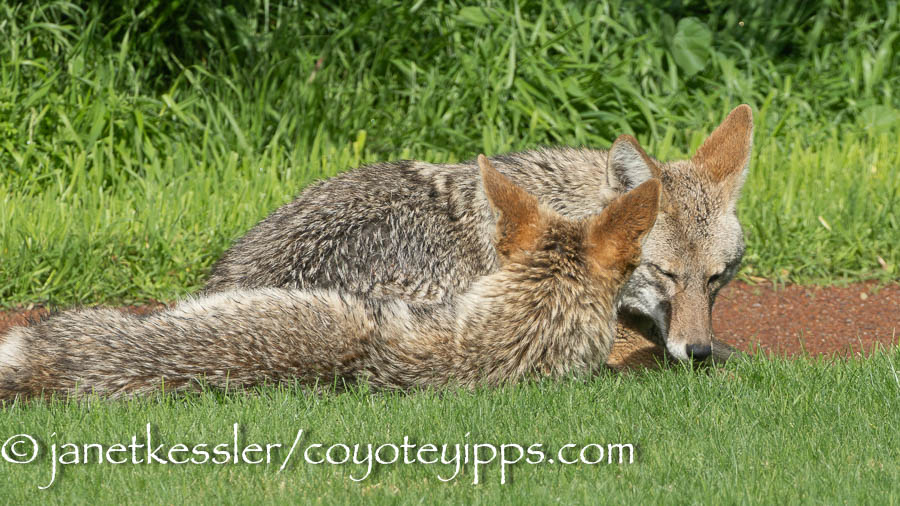
When he plays with her, he only plays as roughly as she plays. If you have a dog, you’ll know what I mean: my dog would play tug of war with me, but always only as roughly as I would. If I pulled gently, she would only use that same force to play with me.If I tugged much more roughly, she exerted that same force, in other words, playing at MY level of capability. I’ve seen this brother coyote play with his much larger and more developed brother, and that is a totally different, rough and tumble, competitive and even forceful interaction. In fact, this caring brother in the end always submits to that roughhouse brother in order to stop the rough play.
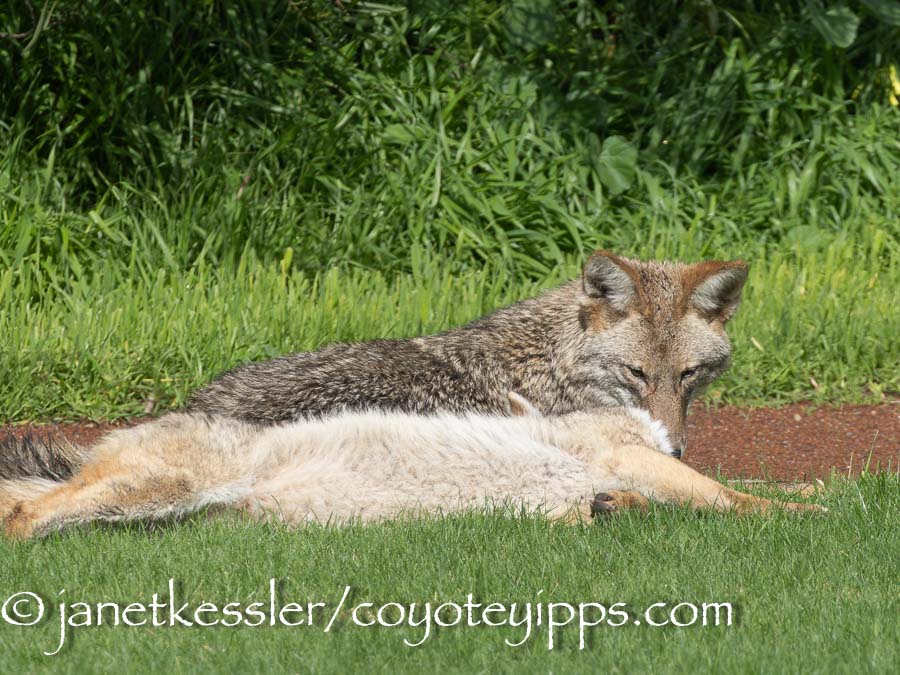
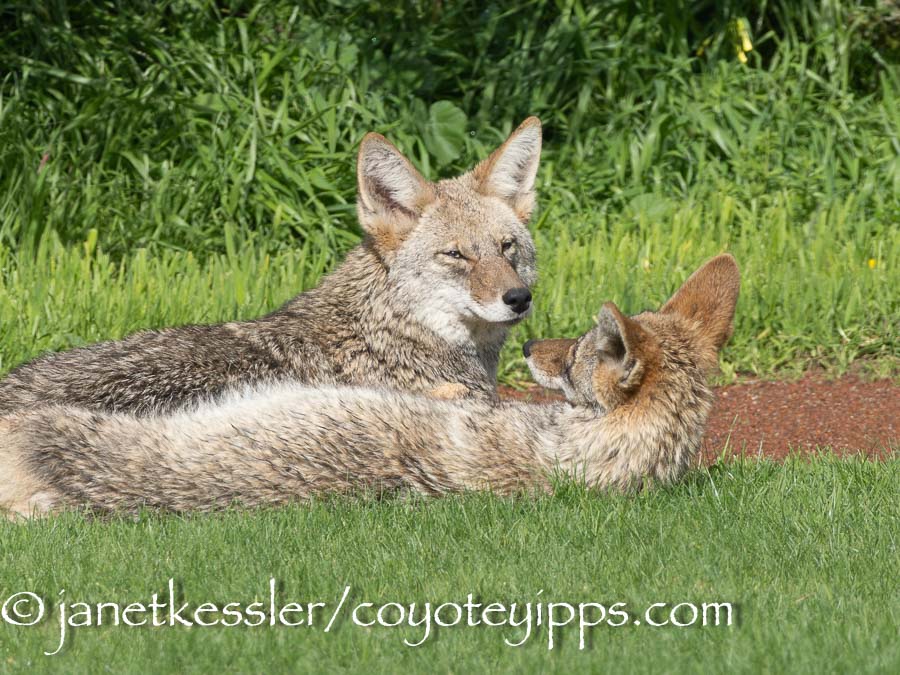
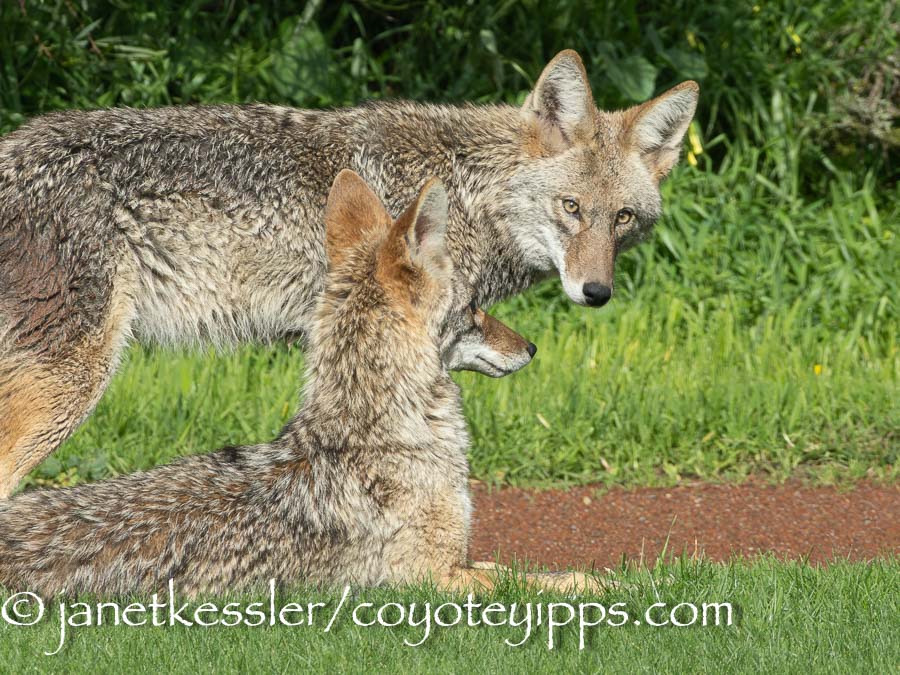
2-5





















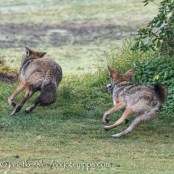





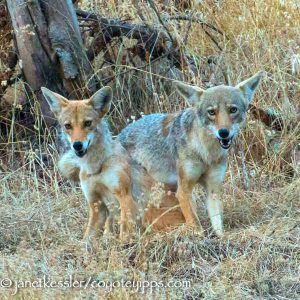 Introduction:
Introduction:

